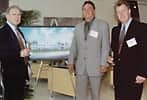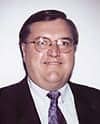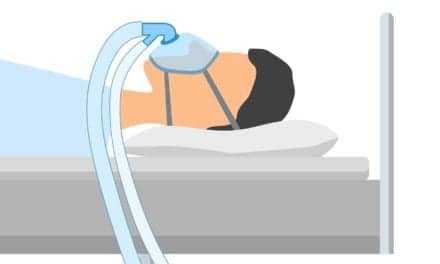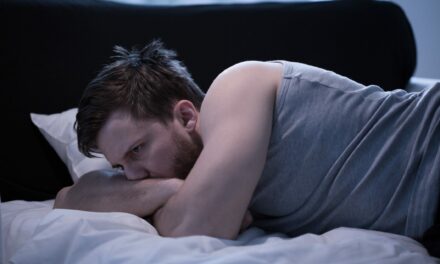Two Cases of Cataplexy

As sleep disorders become more readily recognized by various specialists, primary care physicians, patients, and their family members, the demand for diagnostic testing will increase dramatically. With increased testing, there has to be an awareness of the importance of proper histories and physical examinations before it can be conducted. The two most common complaints that patients express is difficulty falling and/or staying asleep and excessive daytime sleepiness (EDS). EDS is severe enough that it is impacting the daily functioning of the individual. This level of sleepiness is extremely subjective, and it will vary from patient to patient, the level of the severity of the sleep disorder, as well as the length of time it has been present.
The level of EDS can impact individuals at home with their level of interactions with family members, job performance, or, if they are under 18 years old, their academic performance. Most of us who have children know that they will sleep the day away on Saturday, but when do you start to become concerned that the level of EDS is becoming a problem? Children are notoriously difficult to wake up for school, but when you are unable to even arouse them to consciousness, it is time to seek a professional for a diagnosis and possible treatment of your child’s disorder.
Two separate individuals presented at our sleep center with complaints of EDS, difficulty awakening in the morning, and frequent naps during the day. They were facing academic problems, and one patient was possibly going to be left back a year in school.
Patient one
Our first patient was a 16-year-old male who was 5’6″ tall and weighed 110 pounds. His EDS began approximately 3 years ago, but within the last 8 months it had been progressively getting worse. The patient had been previously diagnosed with attention deficit hyperactivity disorder, irritable bowel syndrome, ulcers, and migraines. He was currently taking lansoprazole and atomoxetine.
The patient stated that he was always tired, even after a full night’s sleep. He also complained of weakness and then the sudden need for more sleep. He napped regularly four to six times a week for 3 to 6 hours per nap. His Epworth Sleepiness Scale was 17 out of a possible 24. He had fallen asleep while riding his bike, as well as in the shower. There were episodes of loss of concentration and lapses in attention due to drowsiness or sleepiness. His bedtime varied from 6 pm to 2 am, and it took him 1 to 5 hours to fall asleep. On school mornings, he woke up at 6 am, while on weekends, he would wake between 12 pm and 3 pm. He did not awaken refreshed but instead was tired and groggy, and with morning headaches.
During the physical examination and interview, the patient exhibited signs of cataplexy as well as sleep paralysis. The patient stated that he did not smoke, drink, consume caffeine, or use recreational drugs. His heart rate was 90 to 100 beats per minute with room air saturation 99%. His airway size was three to four; head, eyes, ears, nose, and throat (HEENT) appeared to be normal; pharyngeal inlet appeared normal; palate appeared normal; lungs were clear; and heart sounds were S1S2. There was no evidence of edema or clubbing, and neurologically, he appeared to be slightly hyperactive with no focal deficits.
Impression was inadequate sleep hygiene (ICD-9 307.41-1), a long sleeper (ICD-9 307.49-2), or possible narcolepsy (ICD-9 347). The patient underwent a diagnostic polysomnogram with a multiple sleep latency test (MSLT) to follow as well as a sleep diary.
The diagnostic polysomnogram revealed a relatively normal night’s sleep. The patient had a sleep efficiency of 93%, mildly prolonged sleep latency at 22 minutes, and a normal REM sleep latency of 91 minutes with a mild reduction in total REM sleep at 18.1% for the night. There were a total of nine apneas/hypopneas noted for an overall index of 1.2 events per hour of sleep, which is classified as normal. There were no leg movements noted during the course of the night, and the patient’s saturation remained above 91% for the entire evening. The next morning, an MSLT was performed according to AASM guidelines. The patient underwent five naps. The sleep latency for nap one was 11.5 minutes, nap two was 19.0 minutes, nap three 6.5 minutes, nap four 9.0 minutes, and nap five 20.0 minutes. The mean sleep latency for the five naps was 13.3 minutes, and the mean sleep latency for the first four naps was 11.6 minutes. There was REM sleep noted on the first four naps. The drug screening was negative. The sleep diary did confirm poor sleep hygiene, but not enough to explain the severity of the patient’s complaint of EDS, or the REM onsets noted during the MSLT.
Clinically, the patient’s signs and symptoms were consistent with the diagnosis of narcolepsy and poor sleep hygiene, for which he was prescribed sodium oxybate. On follow-up, the patient as well as his parent reported that he is assuming a normal sleep schedule, and that he is taking the prescribed medication nightly.
Patient Two
Our second patient was a 17-year-old female who was 5’5″ tall and weighed 105 pounds. Her sleep problems began approximately 3 months previously, and she had been previously diagnosed with allergies, for which she was currently taking fexofenadine and medroxyprogesterone acetate.
She presented with complaints of difficulty falling asleep, nighttime awakenings, EDS, and morning headaches. She stated that she took up to 2 hours to fall asleep each night. She napped daily between 2:30 pm and 4:00 pm, and stated that she felt better, but not well. As a child, there was a history of sleep walking and sleep talking. The patient also stated that there was a weakness in her arms with an emotional outbreak. Her Epworth score was 7 out of a possible 24. On school mornings she awoke at 6:00 am, and on weekends from 9:00 am to 11:00 am. Also, the family had pets at home.
A physical examination revealed that her HEENT and pharyngeal inlet appeared to be normal, room air saturation was 98%, heart rate was 92, chest was clear, and there was no edema, clubbing, or any neurological deficits noted. Impression was inadequate sleep hygiene (ICD-9 307.41-1), insomnia not otherwise specified, or possible narcolepsy (ICD9-347).
A diagnostic polysomnogram revealed a moderately reduced sleep efficiency at 81%, and a severely prolonged sleep latency at 69 minutes, with a normal REM latency at 72 minutes, which constituted 28.3% of the evening. There was a severe reduction in slow wave sleep at only 12.5% for the evening with a compensatory increase in stage 2 sleep. There were only 11 apneas/hypopneas noted during the night for an overall index of 1.7 events per hour of sleep, which is classified as normal. There were no PLMs noted during the night or cardiac arrhythmias. Overall, the patient had a severe reduction of slow wave sleep and an increased arousal index, which could be caused by a first night affect. The patient underwent an MSLT the next morning according to AASM guidelines. The patient underwent four naps, 2 hours apart. The sleep latency for nap one was 16.5 minutes, nap two was 20 minutes, nap three was 6.0 minutes, and nap four was 10.0 minutes. The mean sleep latency was 13.1 minutes, which was classified as mild EDS. There were no REM onsets noted on any of the four naps, and drug screening was negative.

Upon follow-up, it was discussed with the patient as well as the parent that a strict sleep schedule must be followed, as well as limiting the activities performed prior to initiating sleep.
Discussion
Both patients presented with the same complaints of EDS, frequent naps, irregular bedtimes, and poor performance. The physical examinations and histories both presented with the same “textbook” examples of cataplexy and sudden onset of tiredness with change of emotions. Sleep diaries revealed both had poor sleep hygiene with irregular bedtimes, irregular rise times, and frequent naps during the 2-week sleep record. Their diagnostic sleep studies were somewhat different. The second patient had a prolonged sleep onset, decreased sleep efficiency, and increased arousal index, consistent with insufficient sleep hygiene. Her MSLT was negative for narcolepsy, but did reveal a mild degree of sleepiness, most likely due to poor sleep efficiency and possible first night affect. The first patient had a relatively normal sleep study, consistent with someone who might have narcolepsy, and his MSLT revealed a mild degree of sleepiness. There were four REM onsets noted out of the five nap opportunities, which, with two or more sleep onset REMs noted, can be diagnosed as narcoleptic.
Proper screening techniques, thorough questioning of the patient and/or family member, laboratory testing, as well as the correct diagnostic testing are all necessary for diagnosis and ultimately proper treatment of the patient’s sleep disorder. Conducting studies without thorough histories and relevant data can lead to a missed diagnosis.
Russell E. Rozensky, RRT, RPSGT, CPFT, is supervisor; and Bernadette K. White, RRT, RPSGT, is lead technician, both at John T. Mather Memorial Hospital Sleep Apnea Center, Port Jefferson, NY.





